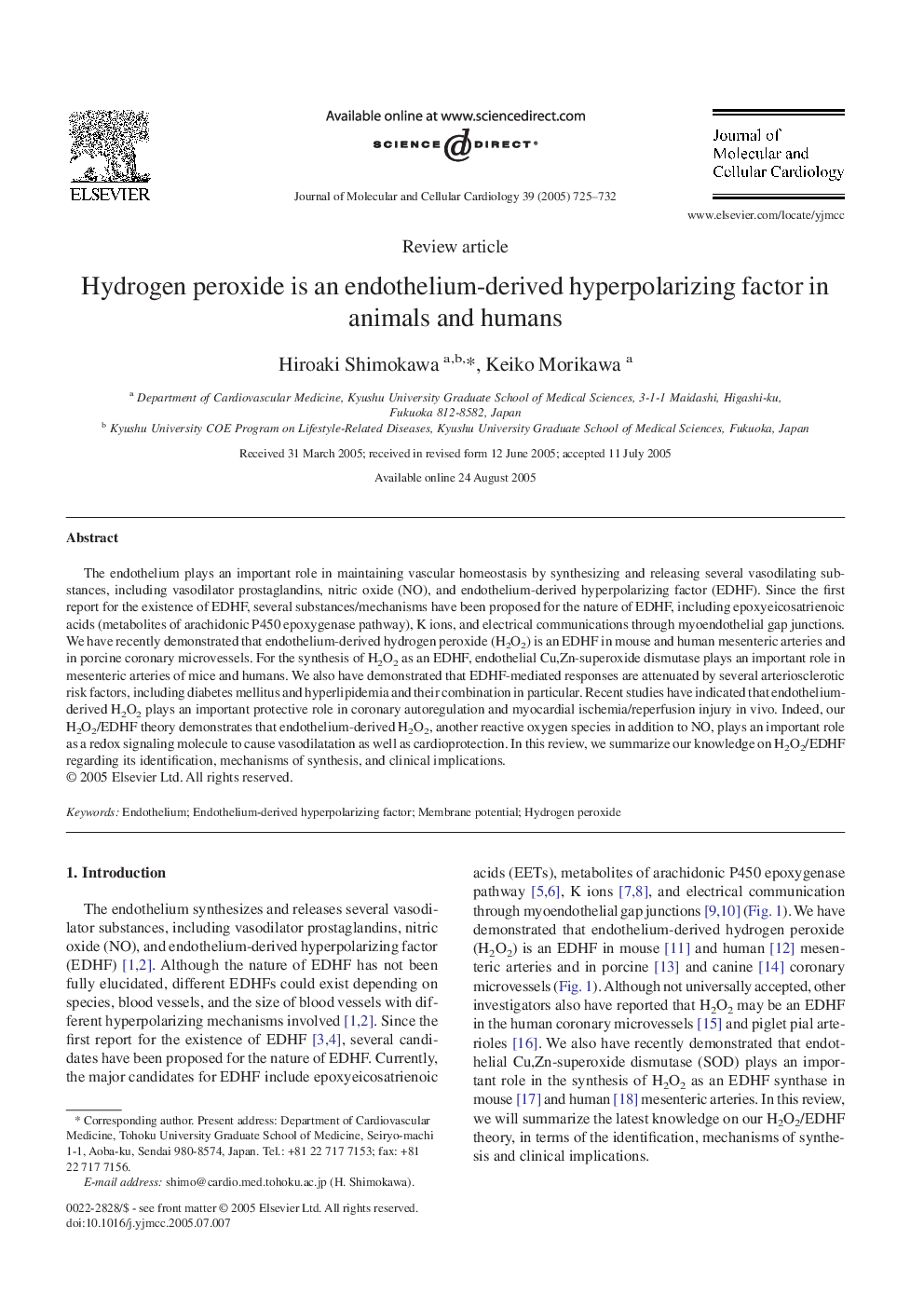| Article ID | Journal | Published Year | Pages | File Type |
|---|---|---|---|---|
| 10954389 | Journal of Molecular and Cellular Cardiology | 2005 | 8 Pages |
Abstract
The endothelium plays an important role in maintaining vascular homeostasis by synthesizing and releasing several vasodilating substances, including vasodilator prostaglandins, nitric oxide (NO), and endothelium-derived hyperpolarizing factor (EDHF). Since the first report for the existence of EDHF, several substances/mechanisms have been proposed for the nature of EDHF, including epoxyeicosatrienoic acids (metabolites of arachidonic P450 epoxygenase pathway), K ions, and electrical communications through myoendothelial gap junctions. We have recently demonstrated that endothelium-derived hydrogen peroxide (H2O2) is an EDHF in mouse and human mesenteric arteries and in porcine coronary microvessels. For the synthesis of H2O2 as an EDHF, endothelial Cu,Zn-superoxide dismutase plays an important role in mesenteric arteries of mice and humans. We also have demonstrated that EDHF-mediated responses are attenuated by several arteriosclerotic risk factors, including diabetes mellitus and hyperlipidemia and their combination in particular. Recent studies have indicated that endothelium-derived H2O2 plays an important protective role in coronary autoregulation and myocardial ischemia/reperfusion injury in vivo. Indeed, our H2O2/EDHF theory demonstrates that endothelium-derived H2O2, another reactive oxygen species in addition to NO, plays an important role as a redox signaling molecule to cause vasodilatation as well as cardioprotection. In this review, we summarize our knowledge on H2O2/EDHF regarding its identification, mechanisms of synthesis, and clinical implications.
Related Topics
Life Sciences
Biochemistry, Genetics and Molecular Biology
Cell Biology
Authors
Hiroaki Shimokawa, Keiko Morikawa,
